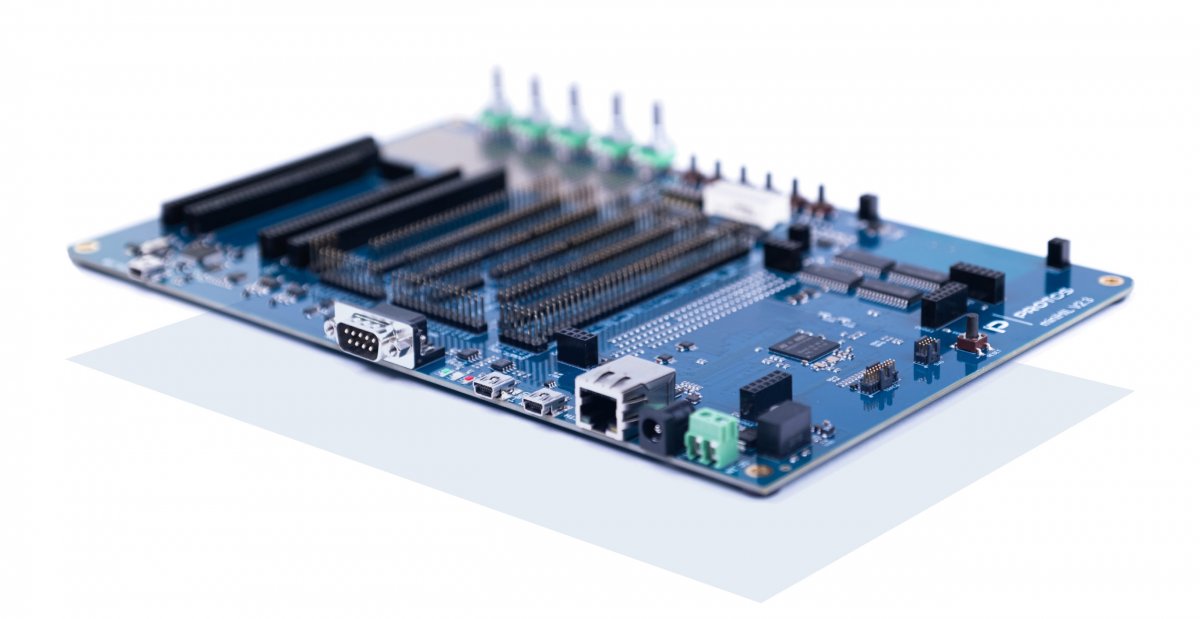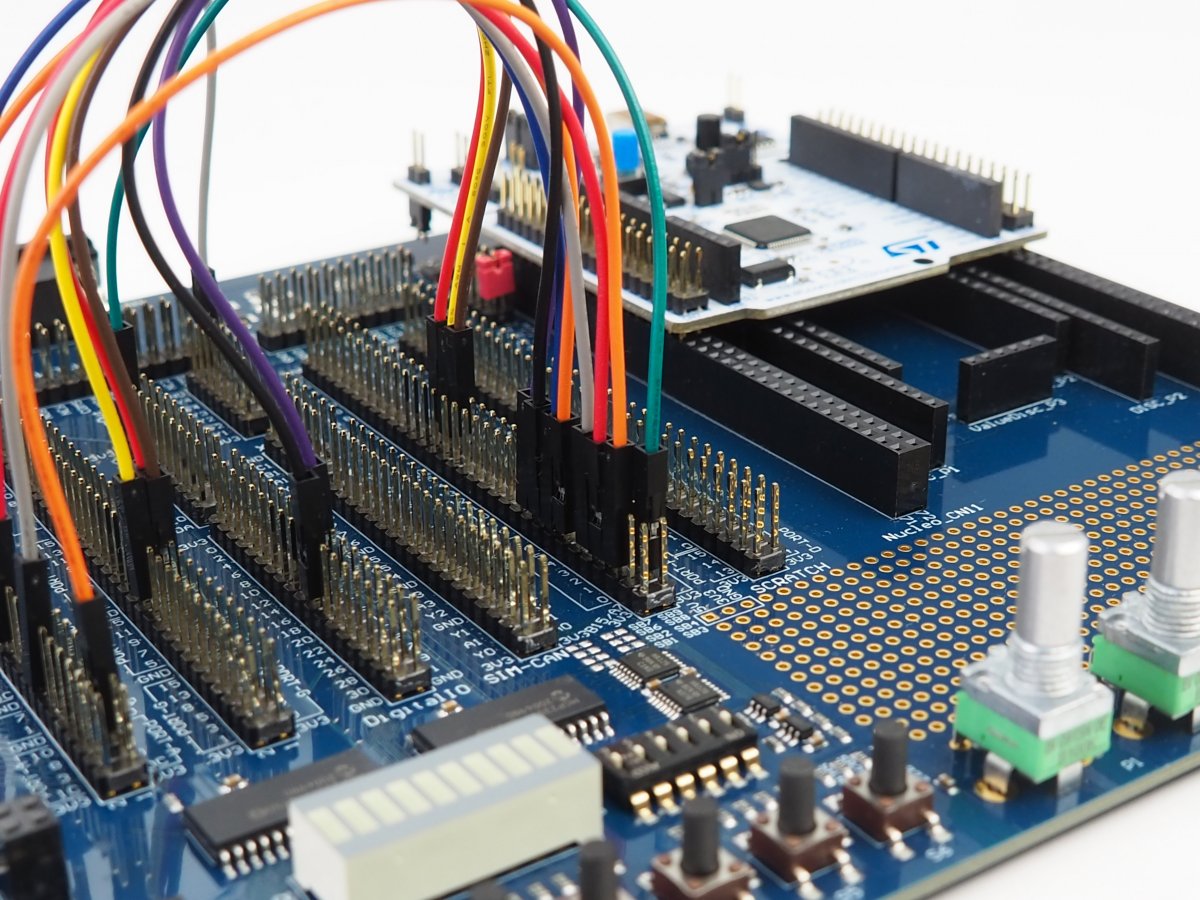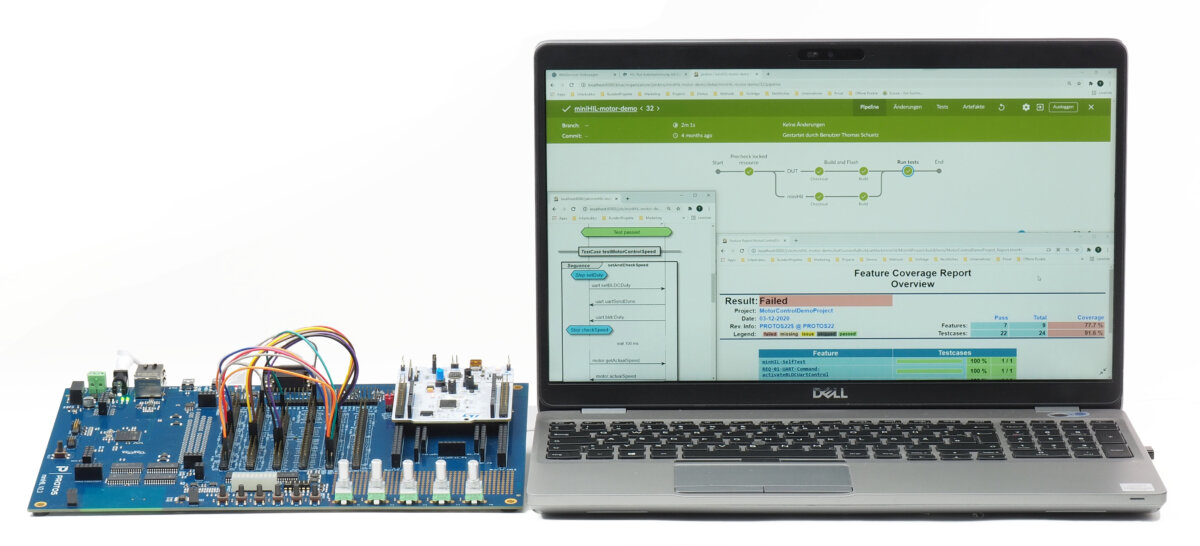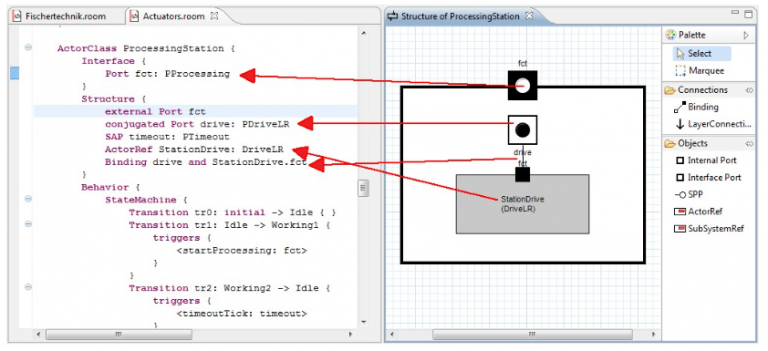
Technical articles on embedded development, DSLs, and ROOM
Benefit from our knowledge!
Browse through our Knowledge Base and make our knowledge yours! We’ve collated articles on optimal software architecture, UML, DSLs, and the early testing of embedded systems with our miniHIL.

Why miniHIL?
In the early stages of development, embedded systems are either not tested or only tested to a limited extent. But why is this the case? Here we take an in-depth look at the reasons and explain how miniHIL, our desktop HIL solution, helps find software bugs earlier in the development cycle. If you want to read more, click here…

What does the optimal embedded test process look like?
Do you have questions or problems related to testing embedded systems? With a thorough analysis of your current test strategy, you can determine where the gaps are in your current test processes. From this, the appropriate test methods can be determined. If you would like to learn more, read more…

Continuous Integration for Embedded Systems
Continuous Integration (CI) tools enable embedded software developers to find software defects with every submitted code change. Such automation, coupled with the PROTOS miniHIL, leads to significant improvements in software quality. Learn more about CI and Jenkins in this article.

Why model software?
Software modeling is a much underutilized approach to improving the development of embedded software applications. Tools such as eTrice, an open source Eclipse project led by PROTOS, bring clarity to otherwise immensely complicated systems. Discover how this modeling tool enables abstraction and how it generates C/C++ for your chosen microcontroller to help you get a handle on complexity.

Domain-specific languages – a powerful tool
Tailor-made always fits best. That’s why domain specific languages or DSLs exist. It’s also why this website uses HTML and not C – it’s better suited to describe how pages should be displayed in the browser. Click here to learn more about DSLs and the role of Xtext and Xtend or MPS in their creation.
